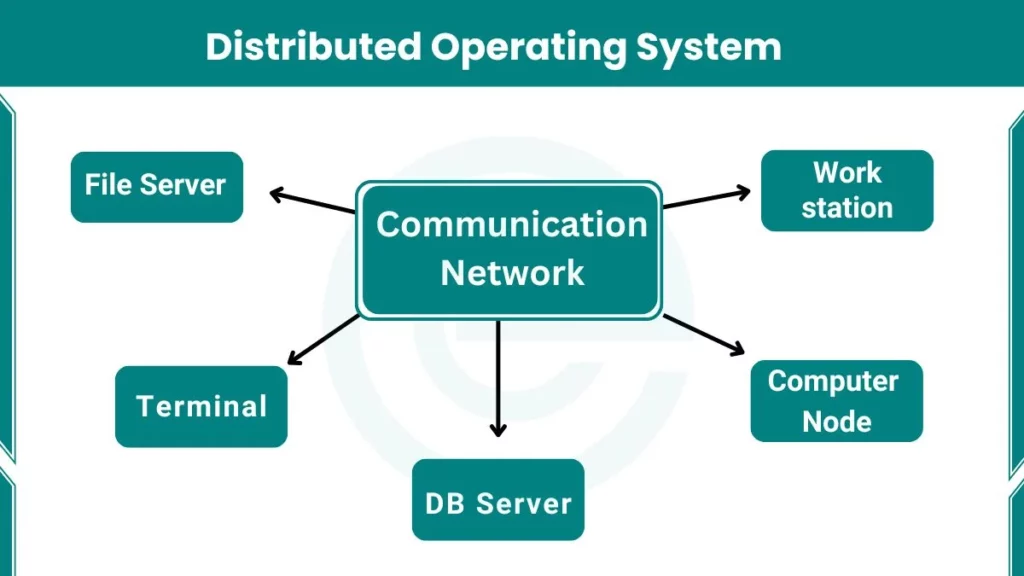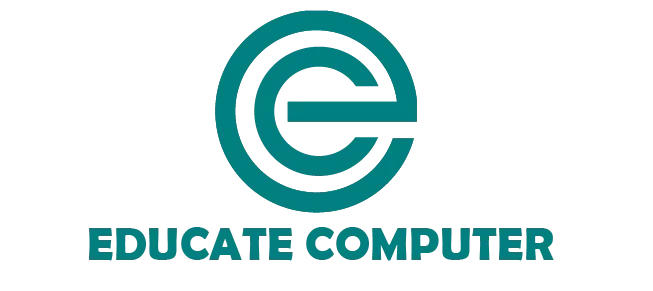A distributed operating system (DOS) manages multiple computers as one system. It connects many machines to work together efficiently, improving performance, reliability, and resource sharing.

What Is a Distributed Operating System?
A distributed operating system seamlessly connects multiple computers. These computers communicate and share resources like memory, storage, and processing power. Users see it as one large system, not separate machines.
Imagine many computers working together to solve problems quickly and efficiently. A distributed operating system ensures this collaboration runs smoothly.
Also Read: Examples of Distributed Operating Systems
Types of Distributed Operating Systems
There are three main types of distributed operating systems:
1. Client-Server Systems
A central server provides resources and services, while clients (users or devices) request and access these resources. The server manages data and processes, while the client interacts with the user.
Example: Online banking, where the central server processes transactions.
2. Peer-to-Peer Systems
In peer-to-peer (P2P) systems, all computers (peers) are equal and share responsibilities. Each peer can act both as a client and a server, sending and receiving data.
Example: File-sharing platforms like BitTorrent distribute files among users.
3. Clustered Systems
Clustered systems consist of a group of computers that work together to perform tasks as a unified system. These systems are often used for high-performance computing and are designed to handle intensive workloads.
Example: Supercomputers used for weather forecasting and scientific research.
Features of Distributed Operating Systems
Here are the main features of a distributed operating system:
1. Resource Sharing
- Computers share hardware and software resources.
- Shares files, printers, and memory across devices.
- Allows users to access resources from any connected computer.
2. Transparency
- It hides the complexity of multiple systems.
- Makes users feel like they are working on one machine.
- It hides details like the location of resources or data.
3. Fault Tolerance
- Continues working even if one machine fails.
- Ensures data is safe and accessible.
4. Scalability
- Easily adds more computers to the system.
- It handles large workloads efficiently.
5. Concurrency
- Many tasks are processed at the same time.
- This speeds up operations and improves productivity.
Applications of Distributed Operating Systems
Distributed operating systems are used in many fields:
- Banking and Finance
- Manages secure transactions across multiple branches.
- Ensures fast and reliable operations.
- Scientific Research
- Processes massive datasets for experiments.
- Powers simulations and advanced calculations.
- Telecommunications
- Maintains large communication networks.
- Ensures smooth voice and data transmission.
- E-Commerce Platforms
- Handles millions of users simultaneously.
- Provides secure and fast shopping experiences.
- Cloud Computing Services
- Offers storage, applications, and services online.
- Examples: Google Drive and Dropbox.
How Does a Distributed Operating System Work?
When you give a task, the system decides which computer will handle it. For example, if one computer is busy, the system can assign the task to another computer that has free resources. This ensures all computers are used efficiently without overloading any single one.
The computers in the system talk to each other through a network. They exchange information to stay synchronized and complete tasks smoothly.
Special protocols like TCP/IP handle this communication and make sure everything happens correctly. If there is an error, the system detects it and quickly takes steps to fix the problem.
Advantages of Distributed Operating Systems
Distributed operating systems offer several benefits:
1. Improved Performance
- Multiple computers work together for faster results.
- Tasks are completed quicker than on a single machine.
2. Resource Optimization
- Resources are used efficiently across all devices.
- This reduces hardware costs and waste.
3. High Reliability
- If one computer fails, others take over its tasks.
- This minimizes downtime and data loss.
4. Easy Scalability
- New devices can be added to handle more tasks.
- The system adapts to growing needs easily.
5. Data Sharing
- Users can access files from any connected device.
- This encourages collaboration and teamwork.
Disadvantages of Distributed Operating Systems
Despite their benefits, distributed operating systems have challenges:
1. Complex Setup
- Installation and maintenance require skilled professionals.
- Managing the system can be time-consuming.
2. Security Risks
- Shared networks are more vulnerable to attacks.
- Strong security measures are essential.
3. High Costs
- Initial hardware and software expenses are high.
- Training and maintenance add to the costs.
4. Network Dependency
- The system relies on stable and fast networks.
- Poor connections can reduce performance.
Also Read:
